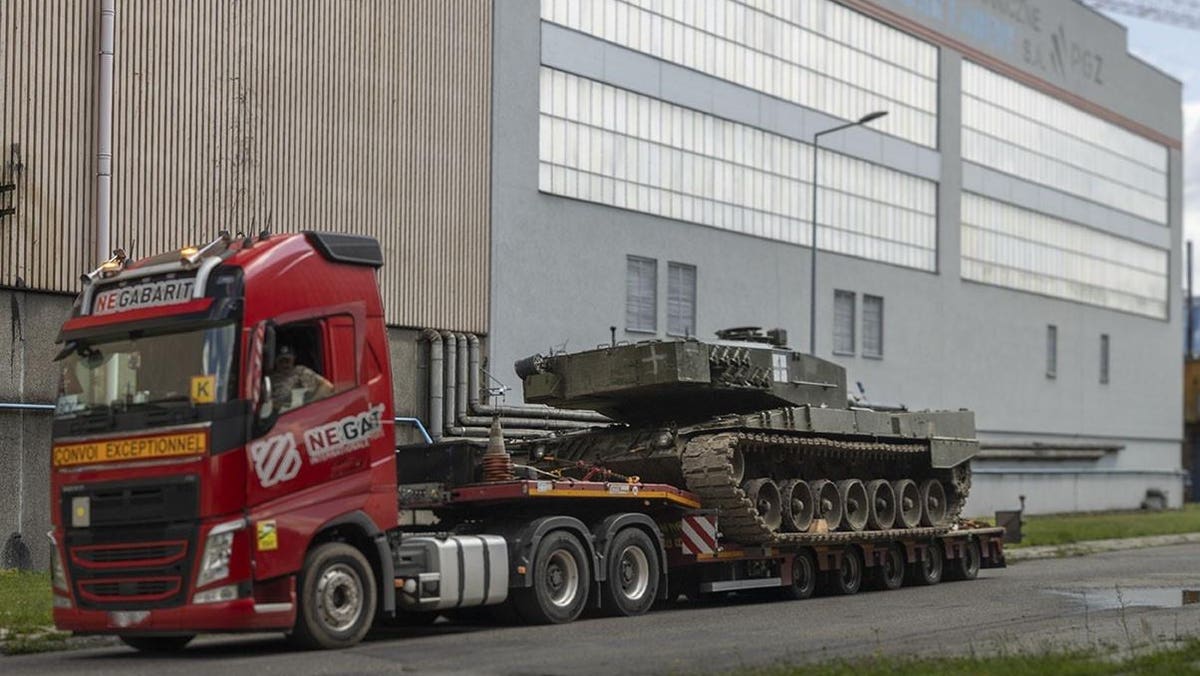How many Western-made tanks has Ukraine lost in the first seven weeks of its long-anticipated southern counteroffensive?
That entirely depends on how many damaged tanks the Ukrainians can repair—or get their allies to repair for them. If Kyiv’s forces or friends can fix up every tank analysts have counted as damaged, losses of Leopard 2 tanks might total … three.
Considering that Ukraine’s allies so far have delivered 95 tanks, that’s not bad. The low loss rate mostly is attributable to the survivability of Western tank designs. It’s not all that difficult to immobilize a German Leopard 2, British Challenger 2 or American M-1. It however is hard to destroy one.
Whereas Russian tanks store their shells under their turrets and tend to burst like firecrackers when hit, Western tanks usually keep their ammunition in special compartments designed to vent outward in the event of a secondary explosion. That tends to preserve a damaged vehicle’s overall integrity.
As long as Ukraine has access to repair facilities, its slowly-growing arsenal of European and American tanks should endure. And thanks to a recent agreement between the governments of Poland and Germany, access to facilities is getting easier.
After weeks of dithering, early this week German tank-makers Rheinmetall and Krauss-Maffei Wegmannand Polish holding company Polska Grupa Zbrojeniowa, or PGZ, inked a deal allowing PGZ to repair Ukrainian Leopard 2s.
Rheinmetall/KMW is famously strict about enforcing its ownership of the Leopard 2 design. While there are foreign factories for producing and upgrading licensed Leopard 2s—PGZ for one produces uniquely Polish Leopard 2PLs by deeply upgrading German-manufactured Leopard 2A4s from the 1980s—every major Leopard 2 initiative requires a fresh contract.
Rheinmetall/KMW and PGZ—more to the point, their respective governments—disagreed on the cost of the repairs. PGZ planned to do the actual work on the damaged Ukrainian tanks at its factory in Gliwice just west of Krakow, but the German government had agreed to pay for the work.
PGZ claimed it would cost 100,000 Euros per tank just to diagnose each tank’s damage. Rheinmetall/KMW claimed the cost of diagnostics should be 10,000 Euros.
Several battle-damaged Ukrainian Leopard 2A4s were already waiting in Poland when the Poles and Germans finally hammered out a compromise. Work on Ukrainian Leopards got underway this week. Polish prime minister Mateusz Morawiecki dropped by the Gliwice factory to commemorate the event.
Photos depict at least four Leopard 2A4s at the PGZ plant. That accounts for all three Leopard 2A4s that the open-source intelligence collective Oryx has confirmed as damaged, plus one 2A4 that escaped notice. The Ukrainian army appears to have lost just one Leopard 2A4 that’s a total write-off.
The 69-ton, four-crew Leopard 2A4 is the most numerous of Ukraine’s Western tanks. Kyiv’s forces so far have received 40 of the 54 A4s that Canada, Denmark, Germany, Poland, Spain and Norway together have pledged.
The newer Leopard 2A6, with its tougher armor and longer gun, is rarer. Germany and Portugal together pledged 21 A6s. Sweden donated 10 examples of the Strv 122: a local version of the Leopard 2A5 that mostly matches the A6’s capabilities, minus the longer gun.
All 31 A5/A6s have arrived in Ukraine. And in the two months of the counteroffensive, two A6s have been destroyed and five damaged. No A5/Strv 122s have been hit, as far as outside observers can tell.
In the worst case, the Ukrainians have lost a third of their best Leopard 2s. But only if the five damaged A6s are impossible to repair. No A6s have showed up at the PGZ plant yet, but they may do so soon.
Rheinmetall has plans to set up two more tank repair centers—one in Romania and, eventually, another in Ukraine proper. The United States meanwhile plans to establish a repair facility in Poznan, Poland for the 31 M-1s that should start arriving in Ukraine in September. British firm Babcock is handling Challenger 2 repairs.
By the time all 240 Leopard 1, Leopard 2, M-1 and Challenger 2 tanks reach Ukraine, possibly early next year, there could be as many as five foreign repair centers supporting the fleet.
Given how tough most German, American and British tanks are, and how much damage they usually can absorb without exploding into a million tiny pieces, those five facilities could keep busy, fixing up tanks—possibly more than once—and sending them back to the front line.
Read the full article here





